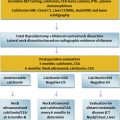
Drs Puram and Rocco elegantly update us on what is known about molecular alterations in squamous cell carcinomas of the head and neck. Drs Velho, Castro, and Chung highlight which of these alterations are likely to offer therapeutic fruits in the near future. Subsequent articles on the EGFR receptor, immunotherapy, and HPV-related oropharynx cancers remind us that there are new diseases that must be evaluated and treated differently, and what novel treatment paradigms (immunotherapy) are emerging. While EGFR-targeted therapies have been around for a while, we are still perfecting how to best use them. One of the most exciting new frontiers in therapeutics is harnessing our own body’s immune system from inhibition of immune checkpoints all the way to genetic engineering of autologous T cells to improve outcomes without necessarily intensifying conventional chemotherapy and radiation treatments. This may be particularly relevant for virally induced cancers such as HPV-associated oropharynx cancer and EBV-related nasopharyngeal cancer.
Multimodality therapy is still the primary treatment approach for most patients with localized head and neck cancer, and there have been major leaps forward in both surgical and radiation treatments. Drs Lim, Holsinger, and Li point out that with surgery, less can be more, especially with new technology such as transoral robotics. In the case of radiation, the excitement of new imaging techniques, image-guided adoptive and replaning techniques, as well as the refinement of intensity-modulated radiation therapy and intensity-modified protein therapy are changing what we can offer patients.
Diseases other than the typical squamous cell carcinomas are also noted for exciting developments. In the case of nasopharyngeal cancer, Dr Sze and colleagues point out that some lower-stage patients can be treated with less. In patients with more advanced NPC, we learn more about the use of drugs beyond cisplatin and personalized prognostic markers such as blood EBV DNA levels.
Thyroid carcinoma treatment options have expanded dramatically. Dr Cabanillas and colleagues have elegantly summarized the great leap forward beyond surgery and radioactive iodine with a discussion of the new tyrosine-kinase inhibitors and inhibitors directed against BRAF mutant tumors.
To round out this issue, we have an update on salivary gland cancers, and last, but not least, Drs Panwar, Cheung, and Lydiatt reinforce the importance of paying attention to supportive care and survivorship in our patients, who are living longer and better lives as our treatment modalities improve.
I hope the readers find these articles both useful and stimulating.
Stay updated, free articles. Join our Telegram channel

Full access? Get Clinical Tree





